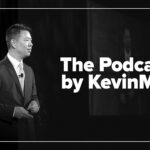“Just take a deep breath.”
It’s the first thing we say when we see someone upset or overwhelmed, and generally, it’s good advice. There is a wealth of evidence supporting the benefits of deep breathing, and it is not uncommon for me to pull out a handout during a patient visit to walk someone through a breathing technique. I’m a family physician—anxiety, asthma, COPD, cancer—it’s all relevant; it’s all primary care. Unfortunately, I didn’t realize how much I took my own breathing for granted until it wasn’t easy anymore.
I was in my second year of family medicine residency during the onset of the COVID-19 pandemic and was in one of the first rounds of trainees caring for COVID-19 patients in our small community hospital. In the beginning, it seemed inevitable that we would get sick. Walking into work felt like actively putting my body on the line. My narrow nasal bridge was not suited for an N-95, so I wore two surgical masks most days and, in the hospital, felt like an astronaut wearing a PAPR. I remember urging family members to complete their advanced directives and then completing my own after seeing a young woman who was otherwise healthy end up in the ICU.
When vaccines became available, I felt an overwhelming sense of relief. I remember waiting for my first dose in a room filled with colleagues, more excited than I had been in months. I hadn’t seen my family for a year and a half because I was so afraid of exposing them to the virus. Once vaccinated, I felt like I could breathe a little easier. I made it through the rest of my residency without getting sick and graduated in 2021.
I first tested positive for COVID-19 nearly one year later, in the summer of 2022. My symptoms were mild, mostly runny nose and congestion, headaches, body aches, and a fever. After I recovered from the acute illness, I had a few symptoms I just couldn’t shake—a high-pitched whistling with my breathing, some post-nasal drip, a bit of a hoarse voice. I attributed these symptoms to a slow recovery from my infection. As the seasons changed, I blamed them on allergies. I tried Flonase and Zyrtec. I couldn’t walk outside without noisy breathing. I thought maybe it was a reaction to the cold weather. My own PCP agreed, and we decided to watch and wait.
In the springtime, I made a plan to get more in shape. I was looking forward to visiting a friend stationed abroad. We were going to climb Mt. Fuji, and I wanted to start training. I started with a gentle hike and could barely walk uphill before I had to stop. I couldn’t breathe. I couldn’t hear anything besides a harsh, high-pitched whistling sound—in and out, in and out. I felt lightheaded, like I might pass out. I didn’t think I was that out of shape. Maybe it was asthma? I asked my PCP for an inhaler and tried to get back at it. The inhaler helped a little but wore off far more quickly than it should have. I had allergy testing done, but the results weren’t exciting; they didn’t explain why I could no longer walk on flat ground without feeling short of breath. I was referred to a specialist, and while waiting for my appointment, I went to Japan. I didn’t summit, but I did climb Mt. Fuji. It was beautiful and painful; intense determination and triumph were tinged with disappointment and secret shame. I was young and “healthy” and still the last person in my group to make it to the 9th station.
When I returned home, my symptoms got worse. I couldn’t climb a set of stairs and have a conversation at the same time. I couldn’t walk from one side of the clinic to another without getting short of breath. Sometimes I caught myself pausing between words in a sentence. I was using a complicated regimen of inhalers, nasal sprays, and allergy medications without any benefit. Lung function tests and CT scans didn’t provide any clear answers. I was frustrated and scared and wondered if I was making everything up.
As a female physician, I like to think that I understand the challenges women face accessing health care. Yet, despite having every possible advantage, I still found myself swallowed whole. I knew the system and still struggled to navigate it. I was cared for by a conscientious pulmonologist who listened to me and believed my symptoms, and I still felt crazy. More than that, I was exhausted. I knew something was wrong. I told my story consistently, pointing to my throat and describing the sensation of something being “stuck” right there. I specifically used the word “stridor,” not “wheezing.” There were still no answers. I went to work and tried to pretend everything was OK, even as walking and talking and breathing got harder.
In January 2024, after what felt like a relentless push, I finally got my answer. A bronchoscopy showed subglottic stenosis, a significant narrowing just below my vocal cords that left me with an airway the size of a drinking straw. The problem was right where I said it was all along. Everything I had been describing fit.
After another bout of COVID-19, I underwent a procedure to dilate my airway. I felt immediate relief. I was able to do laundry, take out the trash, climb the stairs, and talk to my patients without gasping for breath. I stopped all of my inhalers and pills and sprays. I feel fortunate that, so far, treatment has been relatively easy. At the same time, the process of getting to treatment has not been. Being a doctor and a patient simultaneously has been deeply uncomfortable.
While I feel uniquely suited to tolerating shades of gray given my training, the uncertainty of my diagnosis has been personally challenging. I have pursued testing for other causes for this condition, but ultimately, it seems most likely that my subglottic stenosis is idiopathic. I have never been intubated before (the most common cause of subglottic stenosis), and the fact that my symptoms started immediately with COVID-19 makes me suspect that some degree of narrowing was already present long before I got sick.
Regardless of the cause, for now, the plan is to watch and wait. When I feel short of breath again (and I almost certainly will), it will be time to dilate. I have been trying to find a path to self-awareness without hypervigilance, though my success varies on a daily basis. I have done a lot of reading and have been connected with an online community of people with idiopathic subglottic stenosis, most of whom are women, many of whom have stories just like mine. I am not sure how many of them work in health care.
While I would like to say I have found great personal meaning from this experience, I am not certain that I have had enough time and space to fully process it yet. It’s been a hard and busy year. That being said, I do think that being a patient has given me a greater sense of empathy for my own patients. Most importantly, I think this experience has served as a reminder of how important it is to listen to and believe what patients are saying, even if you don’t understand it yet and especially if you are your own patient. For now, I’ll start by taking a deep breath.
Meredith Milligan is a family physician.

















![Understanding the cracked pot theory of a medical legacy [PODCAST]](https://kevinmd.com/wp-content/uploads/Design-4-190x100.jpg)
![Rebuilding the backbone of health care [PODCAST]](https://kevinmd.com/wp-content/uploads/Design-3-190x100.jpg)

